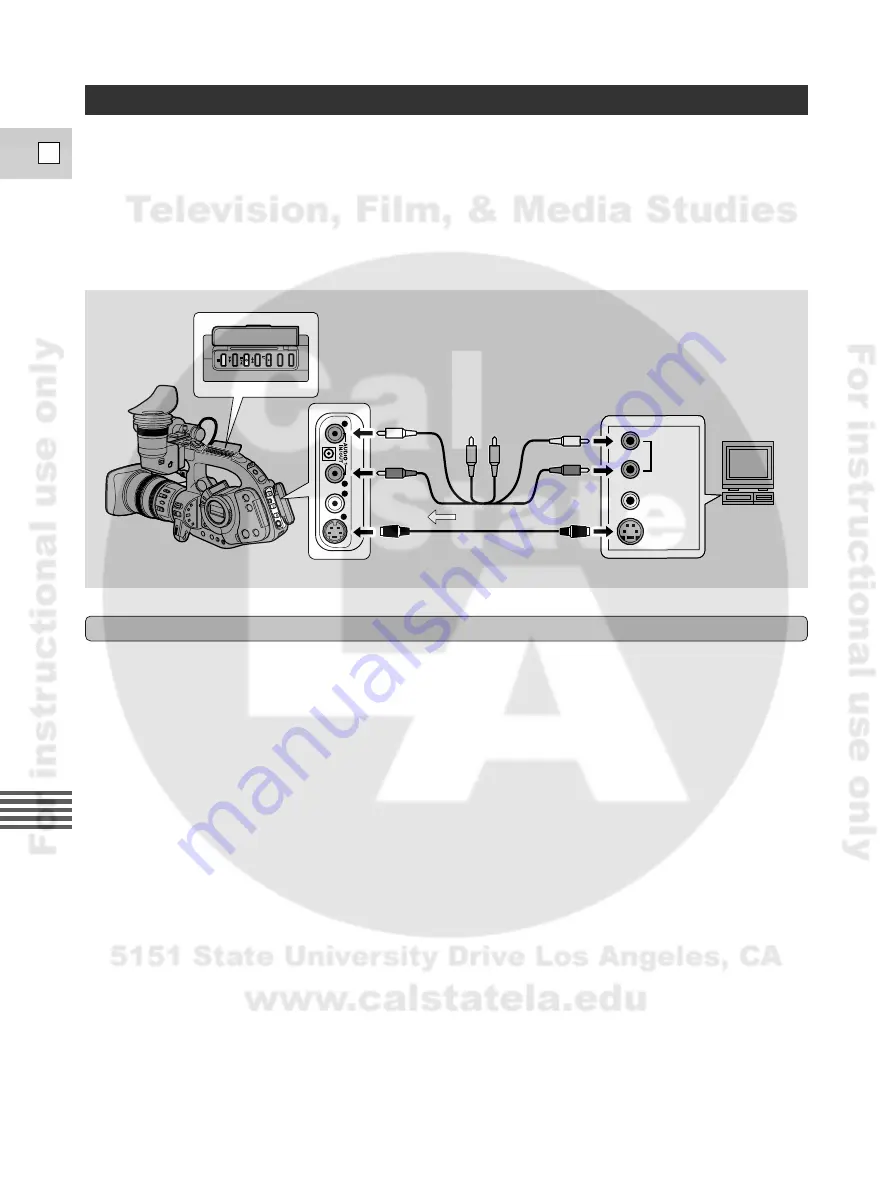
Editing
E
88
Preparations
1. Connect the camera to the VCR, TV or other camera.
2. Prepare the device. (Example connecting to the VCR)
• Set the TV/Video selector on the television to Video. For further details, see “Connections for Playback
on a TV Screen” on p. 83.
• Turn on the VCR. Load your recorded cassette, and put the VCR in playback pause mode.
• See your TV and VCR instruction manuals for details.
3. Turn the camera’s POWER dial to VCR.
4. Slide the INPUT SELECT switch to AUDIO 1.
5. Select LINE of the AUDIO1 IN from VCR SET UP of the VCR menu.
6. Load a blank cassette.
Signal flow
REC
AUDIO DUB.
AV INSERT
L
R
V
S
STV-150 Stereo Video Cable
S-150 S-video Cable
S-VIDEO
VIDEO
R
L
AUDIO
Recording from a VCR, TV or Analog Camera (Analog Line-in)
You can record a video played on your VCR or analog camcorder (for digital camcorder, see p. 86) or a TV
program onto a tape in the XL1S, if the TV or other device has audio/video outputs.
• By selecting the 12bit ST-1,2 of the AUDIO MODE from VCR SET UP of the VCR menu, you can record
4 channels.
• If an anomalous signal is sent from the TV or VCR, the images recorded on the tape may also be
anomalous (although it may not appear so on the TV image), not recorded at all, or COPYRIGHT
PROTECTED DUBBING RESTRICTED may appear in the viewfinder.
• You are unable to dub tapes recorded with the copyright protective signal.






























